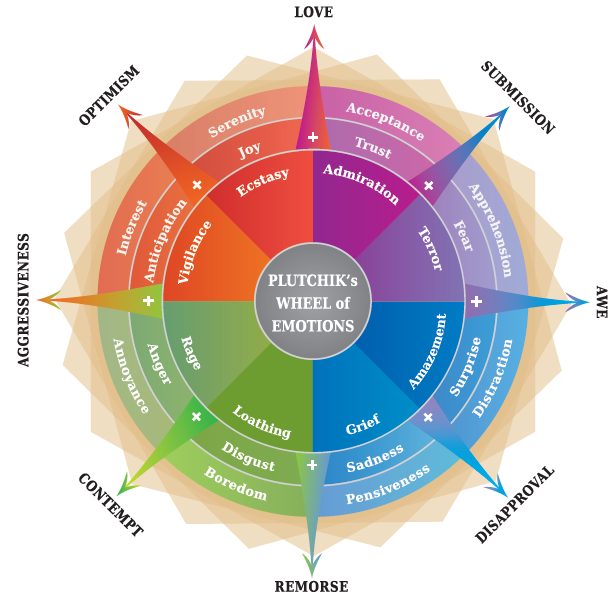Showing Emotions
Let's not forget that the little emotions are the great captains of our lives and we obey them without realizing it. Vincent Van Gogh, 1889.
Emotions are a huge part of our dayto-day life. Self-control comes from communicating feelings well. Telling others when we’re sad or scared makes us feel better. If we are angry or upset, it is better to ‘tell than yell’.
It's easier to talk about your feelings if you know how you feel. Plutchik’s Wheel of Emotions (pictured) may help. Plutchik thought there were eight main emotions: joy, trust, fear, surprise, sadness, disgust, anger, and anticipation. Emotions on the inner circle are more intense, and emotions on the outer circle are less intense (rage is stronger than anger; anger is stronger than annoyance, etc.). The emotions with no colour on the outside of the circle are a combination of two emotions. For example, love is a combination of joy and trust. The wheel also shows opposites. For example, joy is the opposite of sadness, and interest is the opposite of distraction.
There are 3 main steps when talking about emotions. First, think of how you feel (let's say you feel angry). Next, think of why you feel that way (maybe you are angry because someone stole your telephone). Finally, put them together into words (‘I feel angry because someone stole my telephone.’).
It’s good to talk to a parent, a friend, or a teacher when you are having a bad day. It's easy. You can simply ask ‘Can we talk for a minute?’ Then, tell the person how you feel and why. You can say how you feel at any time. The more you talk about emotions, the easier it becomes.

